Themed collection Dalton Discussion 15: Metal ions in medical imaging

Dalton Discussion 15 – Metal ions in medical imaging: optical, radiopharmaceutical and MRI contrast, 8th–10th September 2014, York
Welcome to this Dalton Transactions themed issue including papers from Dalton Discussion 15 – Metal ions in medical imaging: optical, radiopharmaceutical and MRI contrast.

Dalton Trans., 2015,44, 4789-4790
https://doi.org/10.1039/C5DT90036K
MR imaging probes: design and applications
This perspective outlines strategies towards the development of MR imaging probes that our lab has explored.
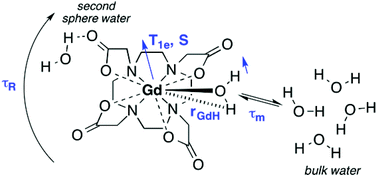
Dalton Trans., 2015,44, 4804-4818
https://doi.org/10.1039/C4DT02958E
Radiometals: towards a new success story in nuclear imaging?
The use of radiometal isotopes in positron emission tomography: a new success story in nuclear imaging?
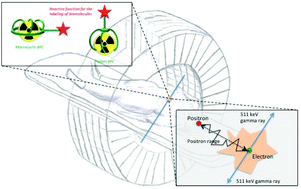
Dalton Trans., 2015,44, 4845-4858
https://doi.org/10.1039/C4DT02911A
A nuclear chocolate box: the periodic table of nuclear medicine
A survey of the current status and challenges for the use of radionuclides of the elements in nuclear medicine.
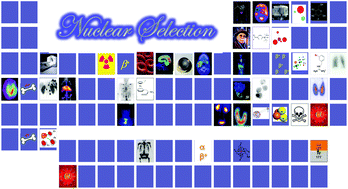
Dalton Trans., 2015,44, 4819-4844
https://doi.org/10.1039/C4DT02846E
EuroTracker® dyes: design, synthesis, structure and photophysical properties of very bright europium complexes and their use in bioassays and cellular optical imaging
The creation of the most emissive series of europium complexes is traced and examples given of their use in imaging.
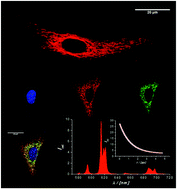
Dalton Trans., 2015,44, 4791-4803
https://doi.org/10.1039/C4DT02785J
Synthesis of sulfonamide conjugates of Cu(II), Ga(III), In(III), Re(V) and Zn(II) complexes: carbonic anhydrase inhibition studies and cellular imaging investigations
New sulfonamides and their metal complexes are reported, with a focus on porphyrin derivatives for simultaneous cellular optical imaging, radiolabelling and Carbonic Anhydrase inhibition capabilities.
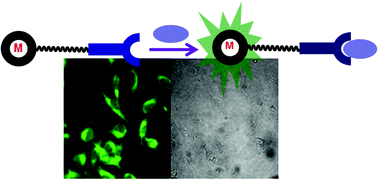
Dalton Trans., 2015,44, 4859-4873
https://doi.org/10.1039/C4DT03206C
Characterisation and application of ultra-high spin clusters as magnetic resonance relaxation agents
Highly paramagnetic coordination clusters with a {Fe10Ln10} core are used as NMR relaxation agents with a first application in a biofilm study.
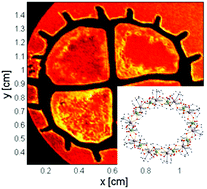
Dalton Trans., 2015,44, 5032-5040
https://doi.org/10.1039/C4DT02916J
Stable Mn2+, Cu2+ and Ln3+ complexes with cyclen-based ligands functionalized with picolinate pendant arms
Cyclen-based ligands containing two picolinate pendant arms form Gd3+ complexes remarkably stable and inert with respect to metal ion dissociation.

Dalton Trans., 2015,44, 5017-5031
https://doi.org/10.1039/C4DT02985B
New AMD3100 derivatives for CXCR4 chemokine receptor targeted molecular imaging studies: synthesis, anti-HIV-1 evaluation and binding affinities
Biscyclam derivatives containing either a BODIPY moiety or a precursor for 18F radiolabelling have been prepared for CXCR4 imaging.
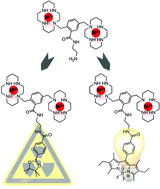
Dalton Trans., 2015,44, 5004-5016
https://doi.org/10.1039/C4DT02972K
Terbium-based time-gated Förster resonance energy transfer imaging for evaluating protein–protein interactions on cell membranes
Time-gated Tb-to-dye FRET imaging for the investigation of E- and N-cadherin expression on different model cell lines.
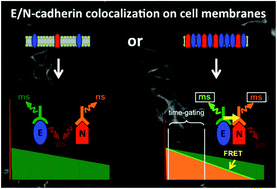
Dalton Trans., 2015,44, 4994-5003
https://doi.org/10.1039/C4DT02884H
99mTc SPECT imaging agent based on cFLFLFK for the detection of FPR1 in inflammation
The FPR1 antagonist cFLFLFK is conjugated to a tetraglycine chelate, and radiolabelled with 99mTc. In vitro binding assays demonstrate that the compound, 99mTc.cFLFLFK, is a useful tool for non-invasive imaging of leukocyte recruitment.
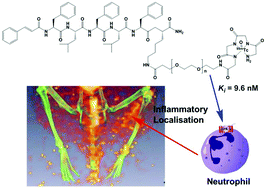
Dalton Trans., 2015,44, 4986-4993
https://doi.org/10.1039/C4DT02980A
Towards understanding the design of dual-modal MR/fluorescent probes to sense zinc ions
A series of new gadolinium complexes have been synthesised to test the design of dual-modal probes that can display a change in fluorescence or relaxivity response upon zinc binding. By an iterative change in parameters of the probes, the compounds give insight into the design protocols required for successful imaging of zinc ions.

Dalton Trans., 2015,44, 4976-4985
https://doi.org/10.1039/C4DT02981J
Technetium-99m and rhenium-188 complexes with one and two pendant bisphosphonate groups for imaging arterial calcification
The synthesis of the first technetium-99m and rhenium-188 complexes with two pendant bisphosphonate groups is described, along with their in vivo use in imaging the skeleton and arterial calcification.
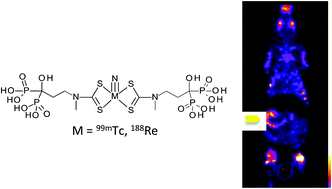
Dalton Trans., 2015,44, 4963-4975
https://doi.org/10.1039/C4DT02965H
Confocal and fluorescence lifetime imaging sheds light on the fate of a pyrene-tagged carbon monoxide-releasing Fischer carbene chromium complex
The synthesis of a new pyrene-containing Fischer carbene complex is described.
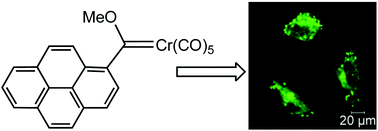
Dalton Trans., 2015,44, 4957-4962
https://doi.org/10.1039/C4DT03312D
Rhenium and technetium complexes that bind to amyloid-β plaques
[M(CO)3]+ (M = Tc/Re) complexes with tridentate ligands with a stilbene functional group bind to amyloid-β plaques associated with Alzheimer's Disease.
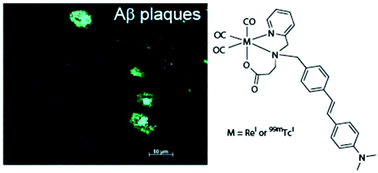
Dalton Trans., 2015,44, 4933-4944
https://doi.org/10.1039/C4DT02969K
Phosphorescent biscyclometallated iridium(III) ethylenediamine complexes functionalised with polar ester or carboxylate groups as bioimaging and visualisation reagents
Four new phosphorescent biscyclometallated iridium(III) ethylenediamine complexes were designed as bioimaging and visualization reagents.
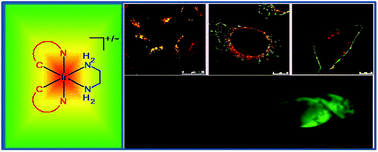
Dalton Trans., 2015,44, 4945-4956
https://doi.org/10.1039/C4DT02890B
Towards the elaboration of new gold-based optical theranostics
Four new red BODIPY–gold(I) theranostic compounds were synthesized.
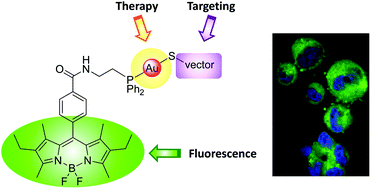
Dalton Trans., 2015,44, 4874-4883
https://doi.org/10.1039/C4DT02977A
PET/PDT theranostics: synthesis and biological evaluation of a peptide-targeted gallium porphyrin
In pursuit of the goal of a molecular theranostic suitable for use as a PET radiotracer and a photosensitiser for PDT, a novel 68Ga radiolabelled peptide–porphyrin conjugate targeting the α6β1-integrin has been developed.
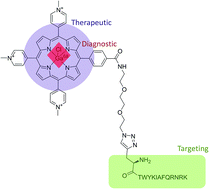
Dalton Trans., 2015,44, 4925-4932
https://doi.org/10.1039/C4DT02949F
Two-photon multiplexing bio-imaging using a combination of Eu- and Tb-bioprobes
Two europium and terbium luminescent bio-probes whose luminescence can be sensitized by a two-photon sensitisation process have been designed and the proof-of-concept of biphotonic multiplexing experiment is described.

Dalton Trans., 2015,44, 4918-4924
https://doi.org/10.1039/C4DT03115F
Optimizing the high-field relaxivity by self-assembling of macrocyclic Gd(III) complexes
The self-assembling of two macrocyclic Gd-chelates results in a small-sized dimeric system characterized by a remarkably high relaxivity, r1.
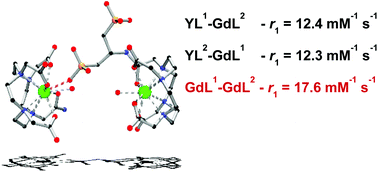
Dalton Trans., 2015,44, 4910-4917
https://doi.org/10.1039/C4DT02971B
Tripodal tris(hydroxypyridinone) ligands for immunoconjugate PET imaging with 89Zr4+: comparison with desferrioxamine-B
A tris(hydroxypyridinone) chelator coordinates the PET imaging isotope, 89Zr4+, rapidly and quantitatively under ambient conditions, but a 89Zr-labelled tris(hydroxypyridinone)-immunoconjugate is not stable to in vivo demetallation.
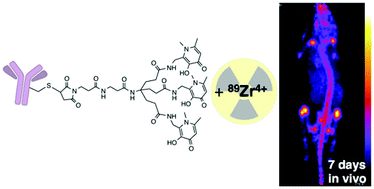
Dalton Trans., 2015,44, 4884-4900
https://doi.org/10.1039/C4DT02978J
Bifunctional 64Cu-labelled macrobicyclic cage amine isothiocyanates for immuno-positron emission tomography
Sarcophagine ligands with isothiocyanate functional groups were conjugated to trastuzumab, radiolabelled with 64Cu and used to image HER2-positive tumours using PET.

Dalton Trans., 2015,44, 4901-4909
https://doi.org/10.1039/C4DT02983F
About this collection
Metal ions have a key role in diagnostic imaging and offer significant advantages/opportunities compared to organic structures.
This themed issue showcases recent work in this exciting field and is associated with the Dalton Discussion 15 meeting held in York in September 2014. It is guested edited by Professor Raphaël Tripier (University of Brest) and Dr Steve Archibald (University of Hull).